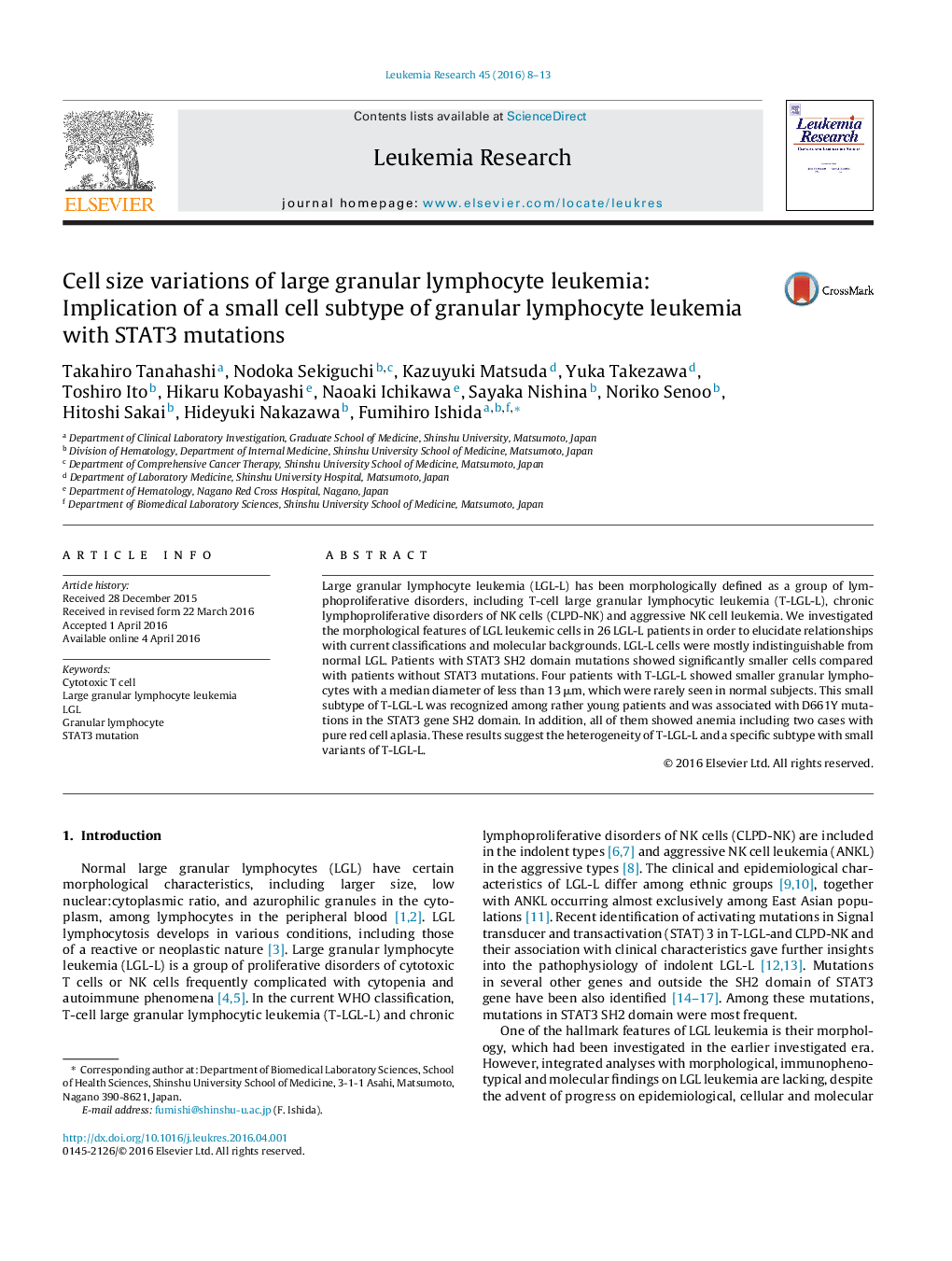| Article ID | Journal | Published Year | Pages | File Type |
|---|---|---|---|---|
| 2136392 | Leukemia Research | 2016 | 6 Pages |
•Significant large granular lymphocyte (LGL) cell size variations exist among LGL leukemia.•A subgroup of T cell LGL leukemia showed small granular lymphocytic cells.•A small cell subgroup of T-LGL leukemia was associated with younger age, anemia and STAT3 mutations.
Large granular lymphocyte leukemia (LGL-L) has been morphologically defined as a group of lymphoproliferative disorders, including T-cell large granular lymphocytic leukemia (T-LGL-L), chronic lymphoproliferative disorders of NK cells (CLPD-NK) and aggressive NK cell leukemia. We investigated the morphological features of LGL leukemic cells in 26 LGL-L patients in order to elucidate relationships with current classifications and molecular backgrounds. LGL-L cells were mostly indistinguishable from normal LGL. Patients with STAT3 SH2 domain mutations showed significantly smaller cells compared with patients without STAT3 mutations. Four patients with T-LGL-L showed smaller granular lymphocytes with a median diameter of less than 13 μm, which were rarely seen in normal subjects. This small subtype of T-LGL-L was recognized among rather young patients and was associated with D661Y mutations in the STAT3 gene SH2 domain. In addition, all of them showed anemia including two cases with pure red cell aplasia. These results suggest the heterogeneity of T-LGL-L and a specific subtype with small variants of T-LGL-L.
